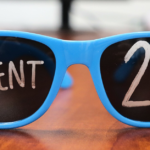How To Spot A Deepfake
Published: April 14, 2023
AI-generated images have become increasingly sophisticated, with the ability to create highly realistic images that are difficult to distinguish from real ones. For example, many people were deceived by viral images of Pope Francis in a white puffer coat. With the rise of deepfakes, it’s important to know how to spot a fake image.
How To Spot A Deepfake
Deepfakes are AI-generated images or videos that are manipulated to make it appear as though someone is saying or doing something they never did. While the technology behind creating deepfakes is impressive, they have been used to spread misinformation and cause harm. A few things to look out for when trying to spot a deepfake:
Inconsistencies
Look for inconsistencies in the image or video, such as blurriness, unnatural movements, or differences in lighting. AI also has a difficult time with hands, so check the number of fingers on each hand. Often times, the color of jewelry or glasses will change as well. These can be signs that the image or video has been manipulated and it is minor inconsistencies like these that many people tend to overlook.
Distorted Facial Features
One of the most common signs of a deepfake is distorted facial features, such as mismatched lips or blinking eyes that don’t match the speech or movements. Inconsistencies in the hair may also be spotted, where it doesn’t line up properly or is disconnected from the rest.
Audio Mismatch
Listen carefully to the audio in videos. If the speech doesn’t match the movement of the lips or the audio doesn’t match the tone of the situation, it may be a deepfake. The lack of any audio in a video is also an indication that the video has been manipulated.
Source Verification
Always verify the source of the image or video. If it comes from an unreliable or unknown source, it is more likely that it’s a deepfake. Do a quick Google search to find another version of the photo or video and see if they match. Google also makes it easy to do a reverse image search to help with validation.
How To Prevent The Spread of Misinformation
If you spot a deepfake that is potentially harmful or is being used to spread false information, it’s important that you help to stop the spread of misinformation. Here are a few suggestions on what you can do to help:
- Raise Awareness: Educate yourself and others on the dangers of deepfakes and how to spot them.
- Verify Sources: Verify the source of the image or video before sharing or reposting.
- Report Suspicious Content: Report any suspicious or potentially harmful content to the appropriate authorities or social media platforms.
As mentioned previously, AI-generated images are becoming more advanced and deepfakes are becoming more prevalent. It’s important to note that while not all deepfakes are created with malicious intent, they can still be misleading and spread false truths. Stay mindful, and if something seems too good to be true or seemingly far-fetched, it probably is. We can’t always take things for their face value, so take a second look and reevaluate before sharing the latest viral video.
Reach Out To Us
Recent Posts
-
 AI for Business Beginners: Powerful Tips to Get Started and Boost Your SuccessOctober 15, 2024/0 Comments
AI for Business Beginners: Powerful Tips to Get Started and Boost Your SuccessOctober 15, 2024/0 Comments -

-

-
 Celebrating 22 Years of Excellence and GrowthSeptember 5, 2024/
Celebrating 22 Years of Excellence and GrowthSeptember 5, 2024/ -

-
 Accent Consulting Named To CRN’s 2024 Fast Growth MSP ListAugust 9, 2024/
Accent Consulting Named To CRN’s 2024 Fast Growth MSP ListAugust 9, 2024/ -

Schedule a Free Network Assessment
A network assessment is an in-depth analysis of your current IT infrastructure that provides you with a comprehensive understanding of your existing environment and recommends improvements such as network consolidation, simplification, or automation.
Learn More

